Dental Implants Tijuana
In 1965 the first titanium dental implant was placed in a human being; since then, the techniques employed in these procedures have advanced a lot. Also, the technology involved has allowed the success rate of dental implants Tijuana to be of 97%, offering aesthetic and, most importantly, functional results.
Nowadays, it is difficult to distinguish a dental implant from a natural tooth since materials with a very similar appearance to teeth are used. However, there are many doubts about this procedure and the benefits it can bring to a person.
What are
dental implants Tijuana?
In simple terms, dental implants Tijuana is a procedure aimed at replacing a missing tooth through metal pins with an appearance similar to screws placed where the root should be, and an artificial tooth is placed on top of them.
The artificial tooth is used to replace the missing tooth, which is why resistant, good-quality materials are usually used to fulfill this function. Because of this, it is currently used as an alternative to other treatments, such as dentures and bridges that are not well fixed.
What do
dental implants Tijuana consist of?
They consist of an ambulatory surgery that is performed in stages; there is a healing time between the procedures performed. Therefore, the patient will have to wait some time to see the final results of the dental implants Tijuana.
In the first stages, the damaged tooth will be extracted in case there is still a tooth, and if necessary, the jawbone will be prepared with a graft. When the time comes, the dental implant will be placed. After the bone grows and heals, the abutment will be placed, and the mouth will be ready to place an artificial tooth.
Depending on each case, the whole process may take more or fewer months than expected since there are factors that can facilitate or delay the process. Bone grafting is not necessary in all cases of dental implants Tijuana; this is determined during an evaluation.
Which are its benefits?
Nowadays, dental implants are one of the most effective tooth replacement methods available. It is the closest thing to the natural tooth and can provide the patient with several benefits, among which are the following:
They are similar to a natural tooth
Similar to natural teeth, dental implants Tijuana remain fixed to the jawbone so that the patient can eat normally. This is because titanium is used, a material that, due to its characteristics, can fuse with the bone, cannot be seen with the naked eye, and provides the same functionality as a natural tooth.
They can last a lifetime.
Other methods are often used to replace missing teeth. However, they usually must be replaced. Removable dentures and fixed bridges are examples because as time goes by, they need to be replaced, while dental implants, as long as they are well cared for, can last a lifetime.
Bone loss is prevented.
A common problem affecting thousands of people worldwide is bone loss, which occurs when a tooth is missing. In these cases, dental implants Tijuana provide the bone with the constant stimulation it needs to stay in good condition.
They do not damage the surrounding teeth.
Unfortunately, some alternatives used to replace missing teeth damage healthy teeth. This is the case when placing fixed bridges since the pieces that support the bridge end up being affected.
In that sense, the main advantage of dental implants is that they do not damage the surrounding natural teeth.
Easy to clean
Another advantage of Tijuana dental implants is that they can be cleaned similarly to natural teeth. So as long as you have a good cleaning technique, you can be sure that your dental implants will last for many years.
Who are the candidates?
Most people can be candidates for dental implants, regardless of their age. However, it is necessary to have good health and good eating and hygiene habits since smoking and drinking alcohol can affect the effectiveness of a dental implant.
If you take medication, you must inform the surgeon if you take medication, as this can compromise your health. It is even possible not to perform dental implants Tijuana because of the danger that the patient may run in case of being medically compromised.
Another thing that can prevent this procedure is severe bone loss. In these cases, the surgeon must evaluate whether the patient is a candidate for a bone graft.
Why choose Draw Clinic?
In Draw Clinic, we seek to be a team committed to the patient’s well-being. That’s why before starting the treatment, we perform a comprehensive diagnosis. In addition to dental implants in Tijuana, we specialize in general dentistry, oral surgery, whitening, and prosthetics.
You can rest assured that we will find the best treatment for you. We also know that many of our patients live outside of Mexico, so we offer dental travel packages to suit your needs.
Therefore, you will have nothing to worry about in case you need dental implants Tijuana since you can travel periodically until your treatment is completed. As you can see, there are many benefits to treating your dental problems at Draw Clinic because we will always offer you the best treatments as experts in dental care.
In case you have any questions or want to make a consultation, you can get a free quote through our platform.
table of
contents
Implants are biocompatible titanium fixtures designed to anchor the artificial porcelain teeth that will replace the missing teeth. Once integrated into the jawbone, the implants act as a support for the new artificial teeth (crowns or fixed bridges) and coexist in a healthy and natural way with the rest of the tissues and dental pieces in the mouth.
The new artificial teeth fixed by implants must fulfill three functions:
- Esthetic function
The crowns or fixed bridges that are placed on the dental implant replace the missing tooth and improve the esthetics of the smile. - Occlusal function
The new teeth promote chewing during meals -which improves digestion- and relieve the excess load on the adjacent teeth. - Biological function
Since teeth tend to seek contact with each other, implants prevent neighboring teeth from moving and leaning towards the missing tooth, which favors the appearance of spaces between teeth and the development of caries. In addition, the absence of a dental root lodged in the jawbone causes the alveolar bone to resorb and shrink.
- The body: this is the implant device itself, better known as the screw, which is inserted into the bone. It acts as the root of the tooth and anchors the prosthetic components.
The abutment: this is the piece that connects the body of the implant with the crown. Its function is to join the two parts (implant and crown).
The crown: it is the imitation of the natural tooth from the esthetic point of view. It is the visible part of the implant and is what gives it its functionality and esthetics.
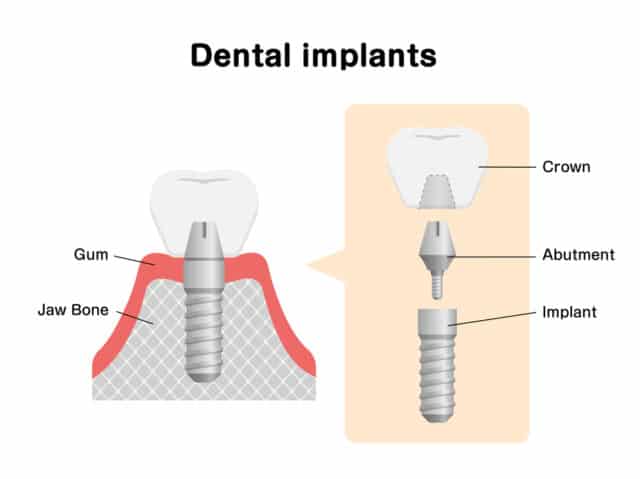
There are 4 types of dental implants depending on how they are placed and fixed:
01.
Subperiosteal implants
These implants are based on metal structures that are placed on the jaw bone, just below the gum tissue. They have posts that protrude through the gums, to which the artificial teeth are anchored. This is an infrequently used type of implant and is used in patients who do not have sufficient bone height to use an implant that osseointegrates into the bone.
02.
Pterygoid Implants
In those cases in which there is little amount of bone – and as an alternative to bone grafting or sinus elevation – implants are placed in the pterygoid process, located in the upper jaw.
03.
Zygomatic Implants
These are threaded implants between 30 and 52.5 millimeters long and are fixed on the cheek bone (zygomatic) in those cases in which there is not enough alveolar bone in the maxilla.
04.
Endo-osseous implants
This type of implants (the most common) are surgically placed in the maxillary or mandibular bone. Its biocompatible material allows the implant to integrate with the bone in a process called osseointegration. After this process, the artificial tooth or crown is placed, thus obtaining the natural appearance of the tooth.
There are 4 types of dental implants depending on how they are placed and fixed:
01.
Screw-shaped
This is one of the most commonly used types of implants at present due to its speed in the osseointegration process and ease of placement.
02.
Cylindrical shaped
It has a cylinder shape and has two perforations in its base, which allow the bone to develop inside, giving a great firmness to the complete implant.
03.
Laminated
Manufactured with perforated titanium sheets to allow bone growth inside, it is indicated for patients with little alveolar bone.
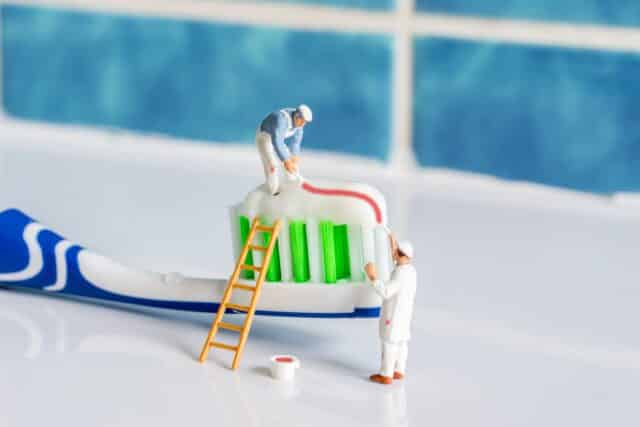
Mini dental implants are titanium screws about 2 millimeters in diameter indicated as temporary implants to be used in cases of immediate loading, while standard thickness (3.75 to 5.5 mm) endosseous implants are healing. Thus, the patient will be able to wear fixed provisional teeth during the osseointegration period (3 months). After this period, the definitive porcelain teeth will be removed and placed.
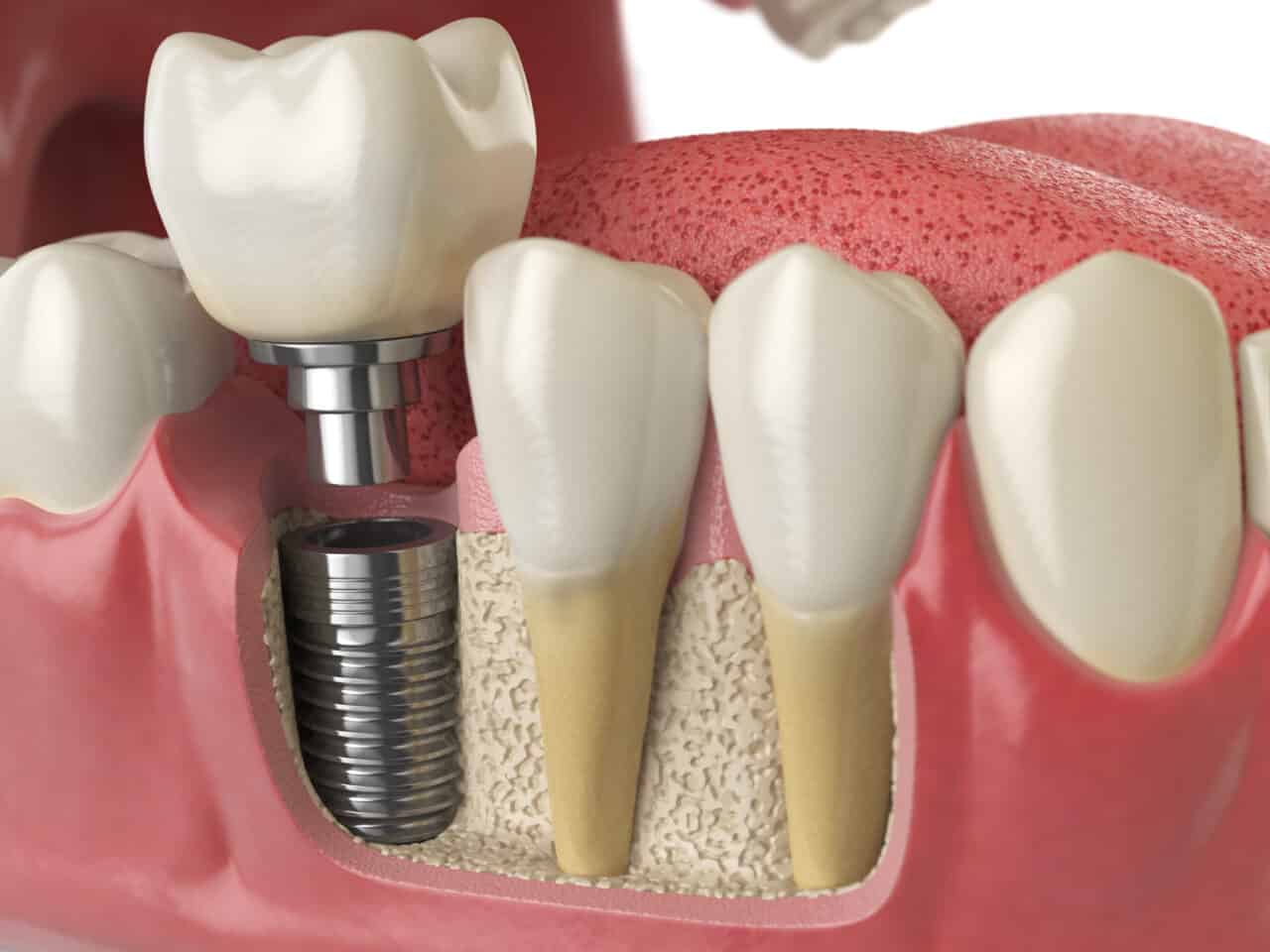
DrAW Clinic
Call us and we will help you to take the best treatment choice
Sometimes, when we refer to “non-surgical implants” we are actually talking about an intervention in which an implant is placed without stitches. Therefore, instead of referring to this technique as “non-surgical”, it would be more appropriate to say “minimally invasive surgery“.
This refers to the technique that allows the placement of implants by means of computer-guided surgery. This means that a 3D oral scanner is used to study the patient’s bone and virtually define the exact place where the implant is to be inserted -position, inclination, etc.-. This is used to make the guide splint that is used in the operation to place the implants without opening the gum.
By means of this technique, the patient obtains a series of benefits: less inflammation and postoperative discomfort as well as a faster recovery period.
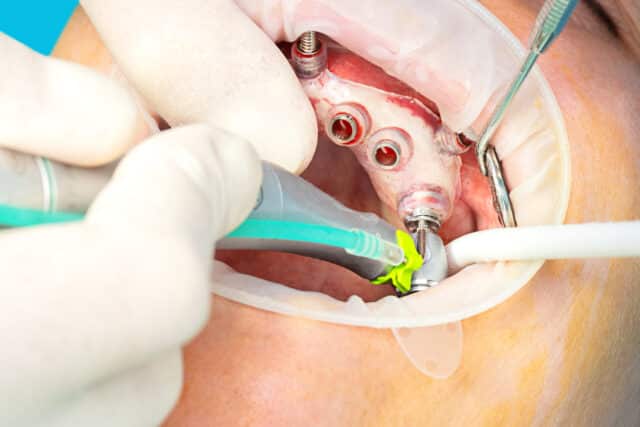
Immediate loading is a technique used in implant dentistry that allows the surgeon to place the implant and then load a temporary fixed tooth on top of it. This can be immediately after surgery or even up to 48 hours later.
Once the patient has the provisional crown, it will be necessary to wait three months to place the definitive tooth, which is the time it takes for the osseointegration process of the implant in the bone.
The main advantage of this technique is that the patient can have the tooth shortly after undergoing surgery. In addition, the patient has a fixed tooth instead of a removable prosthesis, which moves and is more uncomfortable.
These benefits help the person who undergoes surgery to maintain his or her normal routine both functionally – which includes chewing and phonetic ability – and esthetically.
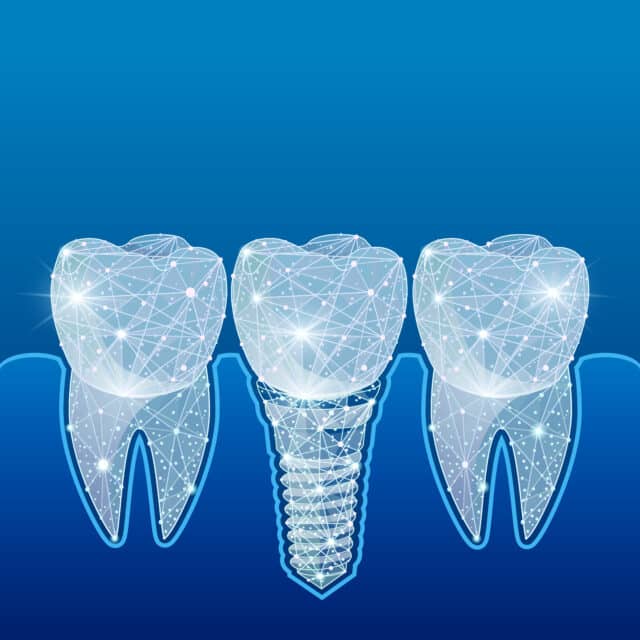
As implantology techniques have developed and, therefore, the functionality and durability of implants have improved, esthetic requirements have also increased.
Implants offer impeccable esthetics as they are indistinguishable from natural teeth, especially when the surgery has been performed correctly and bone defects compensated with grafts. However, the traditional placement technique has the disadvantage of requiring a waiting time -about three months- from the time the implant is inserted until the crown is definitively placed.
Aesthetic implantology has developed the technique of immediate loading implants so that the patient does not have empty spaces in his or her mouth and can therefore maintain discretion and esthetics throughout the duration of the treatment. This procedure allows a provisional crown to be loaded the same day the implant is placed or, at the latest, 48 hours later.
If the treatment has been carried out correctly, the implants offer impeccable esthetics as they are indistinguishable from natural teeth.
Broadly speaking, the advantages of dental implants are that they offer a durable, comfortable, natural and esthetic solution to replace lost teeth.
However, whether to replace part or all of the teeth, there are different alternatives. On the one hand, there are fixed prostheses on implants, which, as they do not have to be removed by the patient at any time, provide a sensation similar to that of natural teeth and are very comfortable. On the other hand, there are removable prostheses on implants, which must be removed once a day to clean them and are also very comfortable, as long as they are well anchored on the implants.
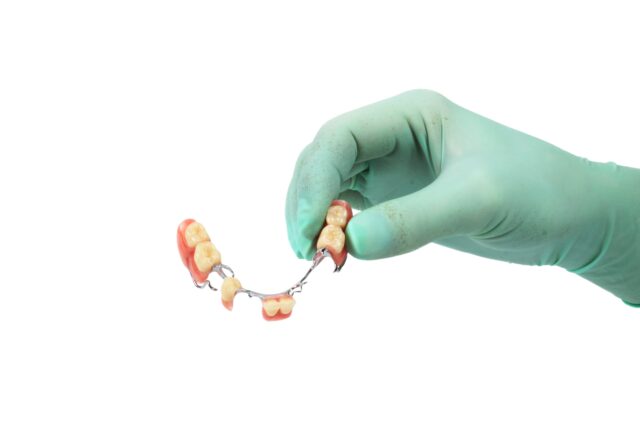
Furthermore, if we compare this option with other alternatives such as a fixed bridge -a prosthesis formed by crowns that are attached to the original root of the tooth-, the advantages of choosing implants are that of load distribution and not damaging the neighboring teeth. If we replace a missing tooth with an implant, the weight that the tooth receives is supported by the implant, while the rest of the adjacent teeth receive their own weight. In this way, the loads are adequately distributed.
However, if we make a bridge and do not place the implant, the load is distributed among the roots of the adjacent teeth. Another disadvantage is that the enamel of these neighboring teeth has to be ground down. On the other hand, if you choose to place an implant, the adjacent teeth remain intact.
When we lose a tooth, either due to trauma or because of periodontal disease, caries or infection, it is advisable to place a dental implant. This is done largely to avoid the main consequence of the space created by the missing tooth: bone loss.
When the maxillary bone does not perceive the stimulus of the root of a tooth, it begins to reabsorb and causes the movement of the rest of the adjacent dental pieces (which always seek contact with each other) as well as the loss of functional capacity in mastication. The placement of a dental implant stops the process of alveolar bone loss and its consequences.
The absence of a tooth causes certain problems in the mouth that can be aggravated to a greater or lesser extent.
On the one hand, the absence of a tooth causes an impact between the food and the gum during chewing. This, in addition to being uncomfortable, causes us to chew on the side where there is no missing tooth, which leads to greater wear and tear in this area and an overload on the joint.
On the other hand, there will be a migration of the teeth that surround the empty space, which seek contact with the lost tooth by inclining and closing the space.
But the pathological migration caused by the absence of teeth can cause other problems: the interdental contacts open up and become irregular, leading to the retention of food and the formation of caries.
The alteration in the position of the teeth makes hygiene difficult, favors the accumulation of tartar and, with it, the bacteria that can lead to the appearance of caries and inflammation of the gums.
To avoid all these complications, the tooth should be replaced as soon as possible. Postponing the placement of an implant entails more work and cost due to the progressive bone resorption that occurs over time.

The loss of one or more teeth can mean the displacement of the rest of the teeth that are in the mouth into the gap or gaps that remain free.
Teeth have a natural tendency to move, so the fact that there are no teeth to hinder this movement benefits the displacement.
The absence of teeth hinders the distribution of forces during mastication causing overloads on the remaining teeth that can lead to tooth wear and pathological migrations.
The replacement of the missing teeth will improve masticatory function, improving the predictability and survival of the permanent teeth in the long term.
There are many manufacturers of dental implants all over the world. And although the vast majority of those classified as high-end are equally effective, their differences are basically due to slight variations in the shape of the screw or in the position of the coils.
At the DrAW Dental Clinic we mainly opt for European manufacturers such as Nobel or Straumann, which exceed the quality standards of the European Union and are considered top of the range dental implants.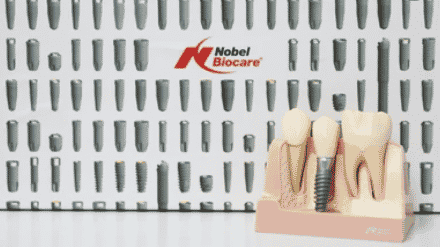
Dental implants are manufactured through a machining process on computerized numerical control lathes with micron precision and high specialization. Each titanium part is meticulously inspected in the laboratory with micrometer loupes to maintain exhaustive quality control.

DrAW Dental Clinic
Call us and we will help you to take the best treatment choice
Although the procedure for the placement of dental implants is relatively simple, it is important to go to a professional to perform it, since it is a surgery that, in the wrong hands, can lead to some complications.
That is why you should go to a dental clinic with a maxillofacial surgeon with proven experience and trajectory or, failing that, to a dentist specialized in Implantology and Periodontics to have implants placed.
The implantologist is the specialized professional in charge of replacing missing teeth by surgically placing a dental implant in the maxillary or mandibular bone. At the DrAW clinic we have professional implantologists with more than 10 years of experience and with training in internationally prestigious masters. In addition, we have state-of-the-art technology such as the 3D Cone Beam CT scanner to obtain radiographic images in three dimensions and an intraoral scanner to be able to meticulously plan computer-guided surgery cases.
Click the image to see Dr. Wintergerst info
Spanish legislation allows any licensed dentist to perform any dental treatment. This is because Spain is the only country in Europe where dental specialties are not officially recognized.
However, at DrAW Clinic we believe that a dentist, no matter how brilliant he or she may be, cannot carry out all dental treatments with the same success. That is why we are committed to the specialization of all our professionals.
Thus, our dentists have extensive experience and advanced knowledge in their area, which allows them to carry out cutting-edge dental treatments with excellent aesthetic and functional results.
Proof of this is that both Dr. Alberto Wintergerst and Dra. Ximena Ávila -the ones in charge of performing implant surgeries in our clinic- practice their specialty exclusively and have been trained for it.
Both have a Maxillofacial Specialty and a lot of expertise on Periodontics and Implants from the Universidad Nacional Autónoma de México, which is recognized at American and Latinamerican level and admits 10 students per year (although there are about 500 students).
They have also obtained the Mexican Board qualification, which allows them to practice their profession in any Latinamerican country.
This type of estimate, which at first appears very attractive to the patient, tends to add concepts such as “attachments”, “implant-prosthetic accessories”, “suture removal”, etc. All this increases the cost that the patient was counting on and what was advertised as an implant for 200 dollars, ends up becoming a treatment costing 2,500 dollars.
Having said this, we feel it is important to emphasize that we believe in the right of any dentist to set his prices freely. However, we are in favor of being scrupulous with ethics as well as respectful of the health, money and aspirations of the patients who come to our practice.
The good quality of the brands and materials used, coupled with a procedure carried out by a trained, specialized and experienced professional makes it incompatible to charge an implant at 200 dollars.
Due to the wide range of prices offered in different dental clinics, it is natural that this aspect generates a lot of confusion and ignorance among patients. Therefore, if you are going to compare different budgets, we advise you to carefully evaluate all the factors that come into play in the surgery and to assess what each clinic offers you.
At this point, our recommendation is that you should always ask for closed budgets and be wary of those that, little by little, add concepts to an amount that was originally very attractive.
For example, some centers base their advertising on “dental implants at 200 dollars”. A hook price attracts many patients but it is misleading, as well as deeply unfair to the patient.
If you want to know point by point what to look for when comparing different budgets, we recommend you read the following article: Implants: the price of replacing your missing teeth.
Generally speaking, it can be stated that the implant is the best option as long as the diagnosis allows it. This is because, of all the possible alternatives, it is the closest to a natural tooth and prevents the loss of maxillary bone. In addition, it allows the replacement of the missing tooth while preserving the integrity of the adjacent teeth. In the event that the conditions are not suitable for the placement of implants, the alternatives to replace the missing teeth would be fixed prostheses and removable prostheses.
Fixed prosthesis
It is the one that the patient cannot remove once it is placed in his mouth. It is the option chosen by most patients because it is more comfortable. However, it requires the grinding of adjacent teeth, so it is a less conservative treatment.
Removable prosthesis
It can be removed by the patient at any time, so it is easier to clean. It is also the most economical option. However, it is also the most uncomfortable, since if it is not well adjusted it tends to move.
There are three types of prostheses, the choice of which will depend on the amount of bone available to the patient or on his own esthetic and functional preferences:
Hybrid prosthesis on implants
FIXED OR HYBRID PROSTHESIS
These are fixed prostheses that are placed on dental implants and are not removable at any time. In the upper arch they are placed on 6 implants, while in the lower arch there will be 4 implants that will support the load of the entire arch.
They are the safest and most comfortable prostheses in terms of possible mobility, but they require a good amount of bone tissue that allows the placement of the necessary implants.
Removable prosthesis
It can be removed by the patient at any time, so it is easier to clean. It is also the most economical option. However, it is also the most uncomfortable, since if it is not well adjusted it tends to move.
Overdenture on implants
SEMI-FIXED OR OVERDENTURE
This type of prosthesis is placed on 4 implants in the upper arch and 2 implants in the lower arch. The union between the implants and the prosthesis is produced by a system called locator (male-female) that allows the disinsertion of the prosthesis.
It is the most hygienic option, since it allows the patient to remove the prosthesis to wash it. It is also more comfortable than removable prostheses because it provides a better fit and retention.
Removable prosthesis on implants
REMOVABLE PROSTHESES
Better known as dentures, they are those that are not implant-supported, but are placed on the gum in such a way that they present certain mobility in their daily use.
There are prostheses on dental implants that are removable. They are attached to 4 implants in the upper arch and 2 in the lower arch by a system called locator (male-female) that allows the prosthesis to be easily removed.
These implant-supported restorations are a suitable alternative for those patients who do not have enough maxillary bone to place a fixed prosthesis. In addition, because they are removable, they allow a better hygiene of the prosthesis than fixed restorations.
- Always remember to brush your teeth at least two times a day, and floss at least once!
- Make sure to use toothpaste that contains fluoride, and ask your dentist if you need a fluoride rinse. This will help prevent cavities.
- Avoid foods with a lot of sugar (sugar increases the amount of bacteria that grows in your mouth causing more plaque and possibly cavities) and avoid tobacco (this can stain your teeth, cause gum disease, and eventually lead to oral cancer).
- Don’t be afraid to brush your tongue! By brushing your tongue, you will remove food particles and reduce the amount of plaque-causing bacteria. Tongue brushing also helps keep your breath fresh.
- Be sure to schedule your routine checkup. It is recommended that you visit the dentist every six months.
Dental implants, like natural teeth, also accumulate food debris causing the development of bacterial plaque. The peri-implant diseases resulting from this put the survival of dental implants at risk, so it is extremely important to maintain proper hygiene. A good hygiene with dental implants should be performed at least twice a day with the following complements:
Cleaning dental implants with a toothbrush
MANUAL OR ELECTRIC TOOTHBRUSH
Always brush in the same order so as not to forget any area of the mouth. Gently insert the brush between the crown and the gum to remove possible food debris.
Cleaning dental implants with an interproximal brush
INTERPROXIMAL BRUSHES
Interdental brushes are very useful for cleaning those spaces between teeth that are too large for dental floss.
Cleaning dental implants with dental floss
DENTAL FINE
Dental floss will complete the interdental hygiene avoiding tartar accumulation. For implants, we recommend Oral B Superfloss or KIN Farmafloss.
Removable dental prosthesis
WATERPIK
The oral irrigator, thanks to its directed water jet, will help you to properly clean dental implants. Its use is highly recommended for both patients with implants and patients with braces.
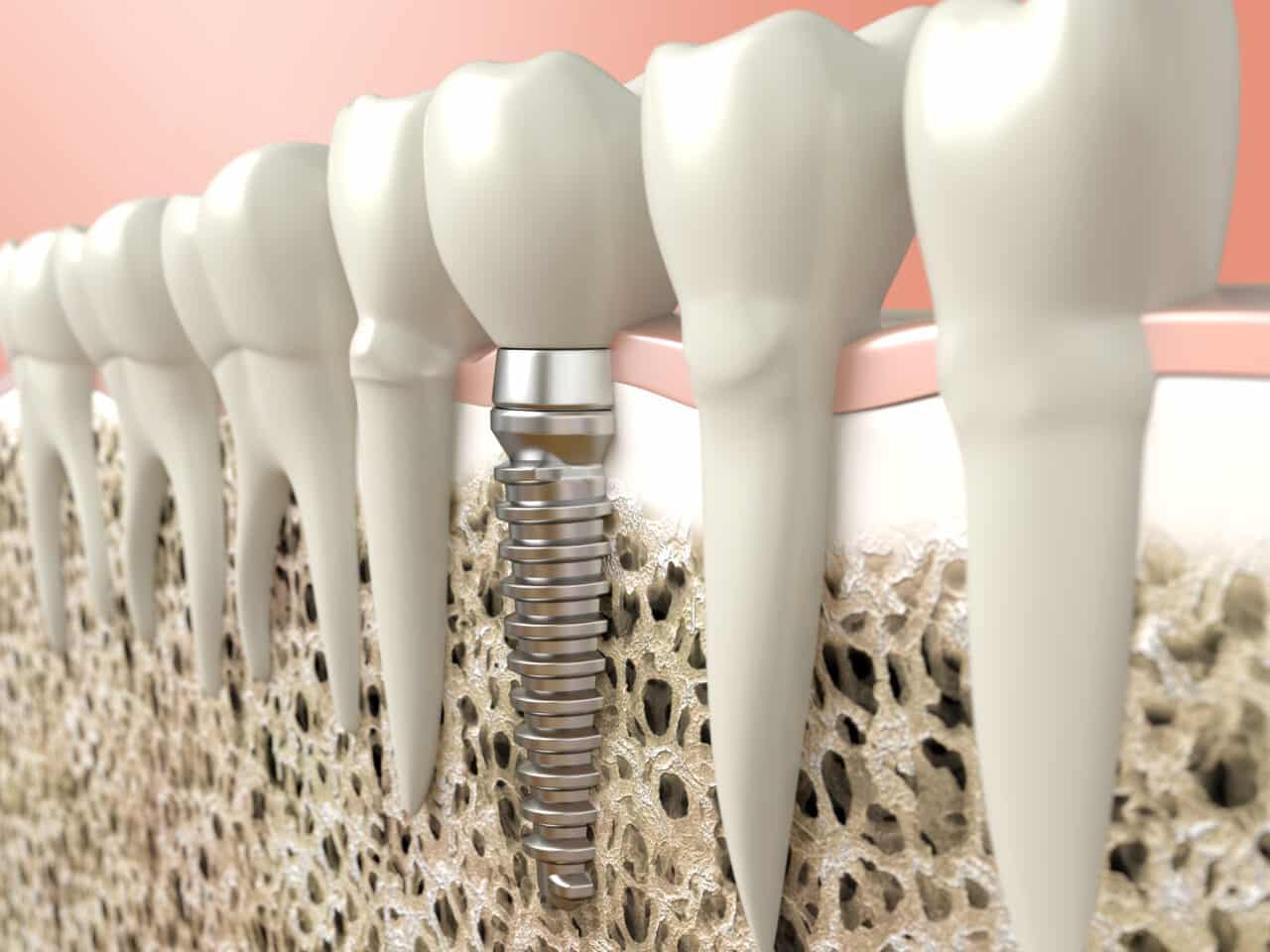
DrAW Clinic
Call us and we will help you to take the best treatment choice
The minimum age is 18 years, although it is better to wait until the patient’s facial development is complete. After the age of 18, people continue to grow and the face continues to change. If an implant is placed too early, there is a risk of unfavorable esthetic results once growth is complete. Therefore, it is best to wait until the patient is 23-25 years of age.
There is no maximum recommended age for implant placement surgery. However, it is essential to evaluate the patient’s general state of health, as well as other factors such as the medication taken, the diseases suffered or the surgical risks that may occur due to the implant placement.
Since the first implant was placed in a human being in 1965 and the practice of this type of surgery began to spread in the 1980s, there have been important advances in the field of Implantology in recent years.
The objective has been not only to obtain better results in terms of naturalness, functionality or duration over time, but also to achieve a faster recovery for the patient. In this way, technological advances have facilitated the advent of computer-guided surgery.
This is a minimally invasive technique that makes it possible to study the patient’s bone and virtually define the exact coordinates where the surgeon will place the implant. Subsequently, a surgical splint is made and used during surgery to make it more accurate and not require the gum to be opened. This will reduce the postoperative period and make it less uncomfortable.
Another of the most innovative techniques currently available is immediate loading surgery, which allows the implant and provisional crown to be placed within a maximum of 48 hours, instead of waiting three months, as occurs in traditional surgeries.
Implant guided surgery
Dental implant treatment step by step
Treatment
Implant placement surgery lasts approximately 30 minutes, although this time may vary depending on the complexity of the case. For example, the process will be faster and simpler if there is a sufficient amount of bone. In the event that the patient does not have a sufficient amount of bone to guarantee the placement of the implant, the graft must be performed during the intervention. The phases of the surgery are as follows:
01.
Anesthesia
Most of this type of surgery is performed in a dental clinic under local anesthesia. However, there are some cases in which it is performed in a hospital center under general anesthesia or sedation.
02.
Incision
A small cut is made in the gum in order to lift it up and access the bone.
03.
Drilling and implant placement
Different drills are used to make the cavity in the bone where the implant will be placed.
04.
Suture
The wound is closed with stitches to protect the area where the surgery has been performed. The suture is removed after approximately 7-10 days.
Computer-guided surgery is an implant placement procedure that favors precision in the process and improves the postoperative period for the patient.
To carry out this type of surgery, the information obtained from a three-dimensional intraoral scanner is combined with the information from a 3D X-ray, and all of this is entered into an implant planning software specifically for this type of intervention. Thanks to the data provided, the program provides valuable information on exactly where to place the implant and what type and size it should be.
In addition, with the help of this system, surgical splints will be designed for each patient, which will serve as a guide for the implantologist to place the implants without the need to make incisions or place sutures. Thus, the postoperative period for the patient will be more bearable and the time spent in the chair will be much shorter.
Implant placement by computer
The duration of the session to place the implants, including preparation time, anesthesia and explanation of the instructions to the patient, is as follows depending on the number of implants to be placed:
1 implant: 40 minutes approx.
Several implants: Approximately 70 minutes
Total rehabilitation: approximately 120 minutes
Titanium, the material from which dental implants are made, is a highly biocompatible compound. That is to say, it does not produce the rejection that usually occurs when our body perceives a foreign body. Furthermore, thanks to its hardness (which allows it to support the weight of the dental occlusion) and its elasticity (similar to that of the maxillary bone), it is the best candidate as a substitute for a missing tooth.
When we insert a titanium implant into the bone, what is known as osseointegration takes place. This is the procedure by which the bone heals around the titanium, resulting in its solid integration. If osseointegration does not take place, the dental implant would fail and would have to be removed and replaced by another one.
The time to wait between the placement of the implant and the loading of the crown depends fundamentally on the type of technique used.
With traditional surgery, this period lasts about three months, which is the time it takes for the implant to integrate with the bone.
Once this period has elapsed, the crown can be placed. In those cases that require bone regeneration simultaneous to implant placement, the osseointegration period can vary from 4 to 6 months, depending on the case.
However, there is a technique called “immediate loading surgery” that allows the surgeon to place provisional crowns the same day the implants are inserted -or up to 48 hours later at the latest-. This crown is worn for the duration of the healing period and is removed when the healing period is over so that the definitive crown can be placed.
Placing a crown on an implant

DrAW Dental Clinic
Call us and we will help you to take the best treatment choice
The usual duration of dental implant treatment in those cases in which there are ideal conditions of quantity of maxillary bone available is three months, a period that corresponds to the time needed for the implant to integrate with the bone.
Dental crown placement without bone regeneration
In those cases in which a regenerative procedure such as sinus lift or horizontal or vertical bone regeneration is necessary, the duration of the treatment will increase.
Thus, if there is no bone at all, the area should first be regenerated by introducing artificial bone, wait for it to heal for 6 months and then place the implant and wait for another 3 months of healing before placing the crown.
Placement of dental implants with complete bone regeneration
However, if, despite the need for an artificial bone graft, there is enough bone to be able to anchor the implant a little, the healing time of the implant (3 months) and the regeneration time (6 months) would overlap, so the final duration to place the crown would be 6 months.
Placement of dental implants with partial bone regeneration
The surgery is performed under local anesthesia, in most cases, or under general anesthesia in some cases. This means that no pain or discomfort is felt under anesthesia.
Once the anesthesia wears off, discomfort of varying intensity may occur. In some cases, there may be swelling in the area where the implant has been placed or hematoma.
To avoid discomfort, it is recommended to consult with the surgeon the use of analgesics. With proper treatment, these discomforts disappear after a few days.
It should be remembered that the surgeon who has performed the operation is the most appropriate professional to determine what kind of care should be followed or what medication to take for the discomfort. In no case is it advisable to self-medicate.
The placement of a dental implant is a relatively simple procedure that is only performed under local anesthesia. Thus, although the patient is conscious during the process, the anesthesia blocks the pain so that the patient feels absolutely nothing.
For those cases in which there is a fear of the dentist, also known as dentophobia, at DrAW Dental Clinic we offer the possibility of performing the intervention in our implantology office adapted for conscious sedation.
Conscious sedation in dental implants
Sedation is especially indicated for patients who are afraid of dental treatment, as it allows them to remain semi-conscious and relaxed throughout the intervention.
In order to apply conscious sedation it is necessary to have a well-equipped implantology office and the presence of an anesthesiologist. The anesthesiologist will monitor the patient’s vital signs, administer the appropriate degree of sedation intravenously and supervise the course of the procedure.
The study and planning phase is the first to be carried out in implant treatment and, therefore, the one on which the rest of the procedures are based. For this reason, it is fundamental for the success and stability of the treatment. This phase, which can be carried out in one or several visits to the surgeon, should include the following points:
01.
Information
Inform the patient about the most suitable implant or prosthesis.
02.
Date
Establish the most indicated time of the year taking into account the patient’s life habits.
03.
Review
Examine the patient’s general and oral health to detect risks or contraindications, if any.
04.
Diagnosis
Assess whether it is necessary to perform additional treatments -before or after- to improve or restore oral health.
Whether for a single implant or in cases of rehabilitation of several teeth, provisional pieces that fulfill the esthetic function can be placed at the same time as the implants are placed.
Thus, in cases of complete rehabilitations (one arch) we can place a removable prosthesis during the three months of healing, or perform an immediate loading procedure, which consists of placing temporary artificial teeth, which will fulfill the chewing and esthetic function during the period of osseointegration of the implants.
When several adjacent teeth need to be replaced, a removable prosthesis that is attached to the neighboring teeth can be used as a temporary prosthesis.
And when there is only one piece in the anterior sector, we can place a provisional tooth attached to the two adjacent teeth that will perfectly fulfill the esthetic functions although not the chewing function.
In those cases in which there is a lack of teeth in a section, there are three possible rehabilitations:
Bridge on dental implants
Implants
Placing two implants to rehabilitate a section of several teeth with a bridge.
Bridge on dental pieces
Bridge
Placing a bridge that will be supported by the neighboring teeth that must be milled.
Removable prosthesis
Removable prosthesis
Use a dento-supported removable prosthesis that will be attached to the neighboring teeth with clasps and thus avoid excessive movement of the prosthesis.
In cases of edentulous people or those who are missing all of their teeth, there are two options: they can opt for prostheses on implants that can be fixed or semi-fixed, or resort to conventional removable prostheses.
Removable prostheses, also known as dentures, are those prostheses that are supported on the dento-alveolar mucosa and are not attached by dental implants to the bone tissue, so they have some mobility in daily use.
On the other hand, fixed and semi-fixed prostheses will be placed on dental implants and can be completely fixed (they cannot be extracted) or removable.
Removable complete prosthesis
The answer to this question depends on the type of tooth, the degree of infection of the tooth to be extracted and the remaining bone tissue. If it is an anterior tooth (incisor, canine or premolar), the roots are narrower and if there is sufficient residual bone on which to anchor the implant, in most cases we can extract the root and place the implant at the same time.
This procedure can be carried out in parallel as long as the infection is not very large and we have previously cleaned the remains of infection.
In the case of molars or if there is a large infection in one of the anterior teeth, it will be necessary to wait longer. That is to say, it will be necessary to extract and wait for the infection to heal or extract and wait for the bone left by the alveolus to regenerate after the extraction. The waiting period can vary from 1 to 3 months depending on each individual case.
The reason for not being able to perform the procedure in parallel is due to the discrepancy in size between the implant and the roots of the molar, the root of the natural tooth being larger than the diameter of the implant to be replaced. As you can see in the following photograph, the implant would not have sufficient initial retention to be inserted at the same time as the extraction.
Implant placement after tooth extraction
How is the postoperative period for dental implants?
3. Postoperative
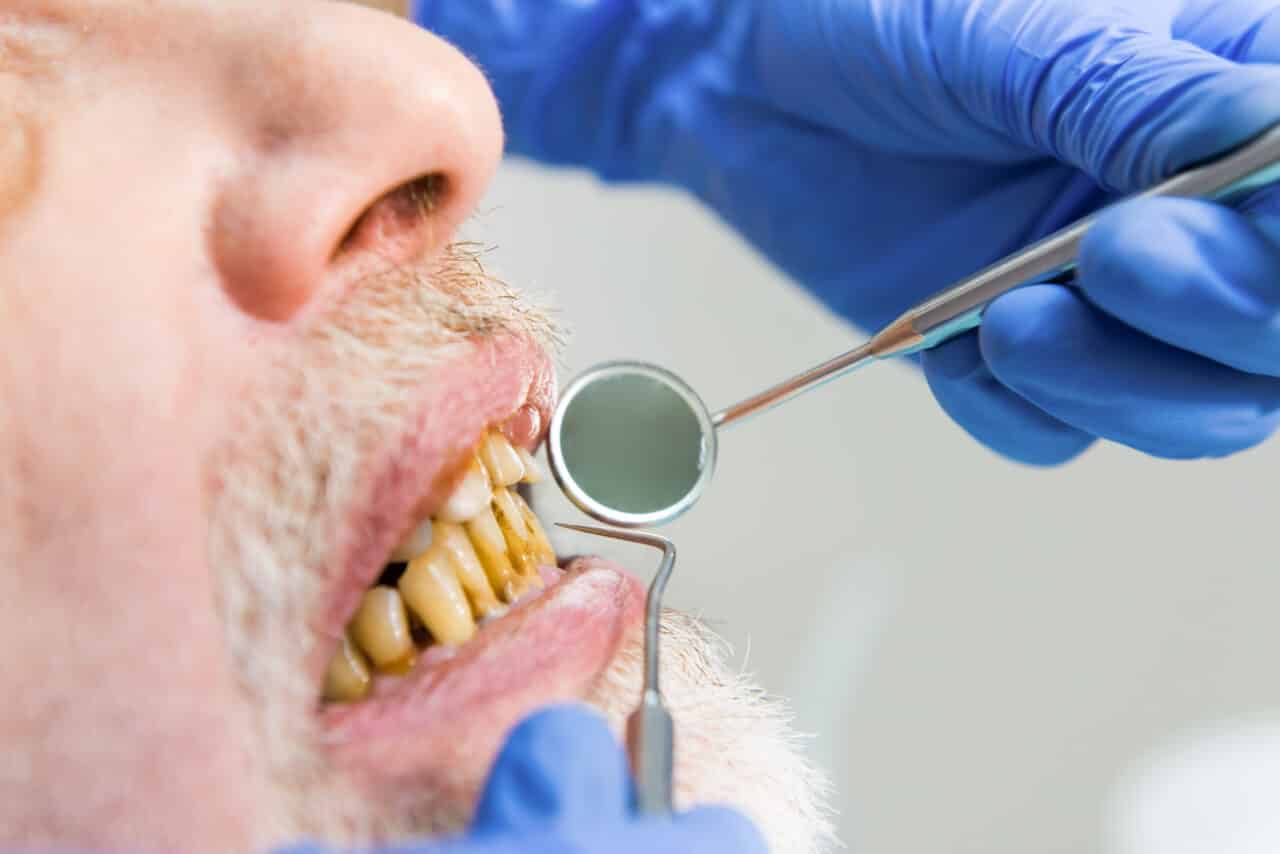
DrAW Clinic
Call us and we will help you to take the best treatment choice
The recovery process after the placement of one or more implants starts right after the surgery. These are the aspects to take into account:
Inflammation
From the very moment the surgery is over, it is advisable to apply ice and some pressure during the following two hours in 10-minute intervals to avoid any type of inflammation.
Bleeding
If bleeding continues after the intervention and after leaving the dental clinic, place a folded gauze on the bleeding area and bite it for twenty minutes to stop the bleeding.
Rinsing
You should not rinse your mouth after surgery as doing so may destroy the clot formed and cause more bleeding. Beginning the day after surgery, rinse gently with alcohol-free chlorhexidine or warm salt water.
Medication
You should take an anti-inflammatory tablet one hour before surgery, and then every 6-8 hours for 4 days. However, you should not take any medication without your doctor’s prescription.
Brushing
Except in the surgical area, you should brush your teeth normally, including interproximal brushes, always starting the day after the surgery.
Eating and drinking
You should wait at least 2 hours after the surgery or until the surgical area regains sensitivity, to be able to have something to drink. A soft and cold diet is recommended for the rest of the day, as too hot food or drinks may cause discomfort.
Tobacco
Smoking is a very important risk factor for the success of implants. Tobacco smoke irritates the tissues, delays healing and increases the risk of post-operative superinfection. The more you smoke, the greater the post-operative pain, so it is recommended to avoid smoking as much as possible.
Yes, this type of surgery is relatively simple, so the recovery period does not affect your normal routine to a great extent. Therefore, you should only follow a series of post-operative advice.
For example, during the first hours or days it is necessary to avoid rinsing your mouth, as well as not drinking hot drinks and eating only cold and soft foods.
In addition, the practice of sports or activities involving physical effort should be suspended for one or two weeks after the operation.
Unless the surgery requires a complicated rehabilitation and regeneration that causes excessive inflammation of the operated area, the day after the placement of the implants you can live a completely normal life. Moreover, in cases of one or several simple implants, and following the doctor’s indications, you should not feel any pain or inflammation that limits our work routine.
It is advisable to wait approximately two hours or until the anesthesia wears off before eating or drinking anything. In addition, during the first day it is recommended to eat a soft and cold diet (food or hot drinks can cause discomfort).
From the second day, you can start eating and drinking more normally but always being cautious with chewing in the operated area.
Dental implants diet
It is well known that the effects of tobacco on our organism are devastating. And in the case of the mouth it is no less so, since smoke puts the success of dental implants at risk: it slows down their healing, generates infections, hinders osseointegration, reduces the capacity to repair lesions, pigments the enamel and favors the accumulation of plaque.
That is why it is advisable to stop smoking two weeks before implant placement, and to extend this period up to 8 weeks after surgery.
This is the period of time corresponding to the osseointegration process, since the success of the healing between the bone and the implant will depend on the success of the intervention.
For cases in which the addiction does not allow permanent cessation of the habit, it will be recommended to smoke less than 6 cigarettes a day for at least the first two months of healing.
Is it possible to smoke with dental implants?
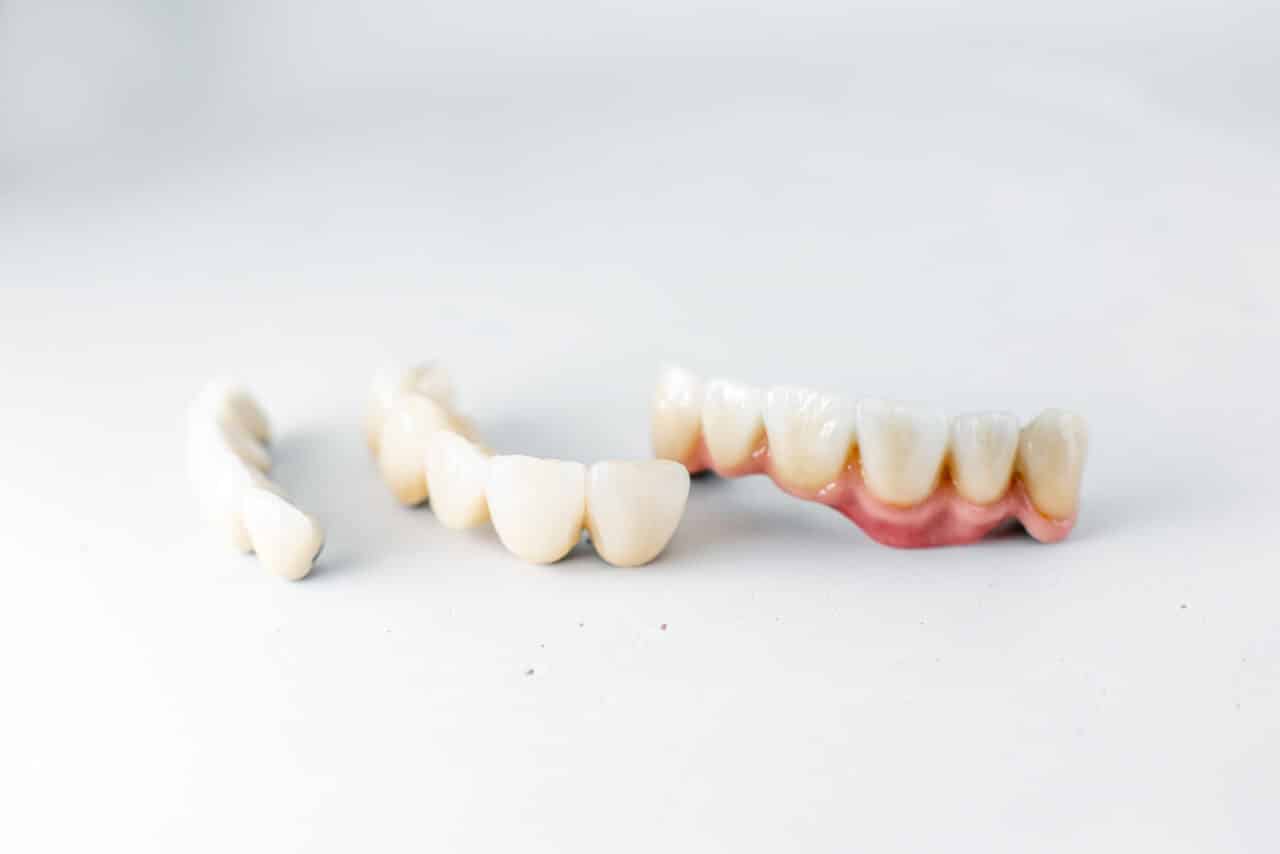
DrAW Dental Clinic
Call us and we will help you to take the best treatment choice
During the three months that the healing of the implants lasts, hygiene should be extreme, even brushing the area of the healing plug that usually shows through the gum (once the stitches have been removed).
It is also advisable to avoid harmful habits such as smoking and to keep control of the behavior of the prosthesis or provisional teeth, so that they do not impact rigidly with the head of the implant.
After the placement of the definitive prosthesis, the hygiene of the implants will be similar to that of natural teeth, combining the usual brushing technique with the use of interproximal hygiene elements (interdental brushes, irrigator, dental floss…).
Hygiene with dental implants
As a general rule, patients with one implant or two single implants should follow the same schedule of check-ups as any other person who has not undergone the intervention. This is once a year or every ten months. This will involve not only a check-up, but also a cleaning.
If the patient has been fitted with a full denture on implants or an overdenture, the check-ups should be every six months. This is because cleaning is more complex and loosening or mechanical complications of the implants are more frequent.
Although they can be made of different materials, most of the implants that are placed are made of titanium.
Titanium is a metal that has been used in implantology for many years and is characterized by its extremely reliable results.
Among its qualities we can highlight that it is very resistant to corrosion, it is light, biocompatible and has a great capacity for integration in the human body.
However, in recent years zirconium implants have begun to be used. Although a priori zirconium has similar characteristics to titanium, its use has not been as widespread.
Zirconium is also biocompatible, resists corrosion, is not sensitive to temperature, is white and does not present allergic reactions. However, studies on its long-term survival are still limited.
The material used for most dental implants is pure titanium grade 4 or 5.
The concept of “metal-free implants” refers to screws that are made of materials that are not strictly metallic, but ceramic, such as zirconium.
This type of implants can be an alternative for people who are allergic to titanium, although this allergy is very rare among the population.

DrAW Clinic
Call us and we will help you to take the best treatment choice
Most commonly, anyone in good general health or with a controlled systemic disease can undergo implant placement surgery. However, despite these general considerations, the suitability of each patient is studied individually before undergoing treatment.
Dental implants and diabetes
If diabetes is controlled, this disease is not a contraindication to undergo implant treatment. However, it is necessary to discuss this issue with the professional who will perform the intervention to determine whether it is advisable to take any additional precautions.
For example, the surgeon may determine the need to prescribe antibiotics to avoid the risk of infection after the intervention.
Osteoporosis is not a contraindication in itself for the placement of implants. However, it should be kept in mind that one of the medications to treat this disease are bisphosphonates.
This medication – which can be taken orally or intravenously – should be taken into account when determining whether implant surgery can be performed.
When determining whether implants can be placed during treatment with bisphosphonates, it is essential to distinguish between those taken orally and those administered intravenously.
While with the former it would not be necessary to stop treatment with bisphosphonates before implant placement, the use of the latter is a contraindication for oral surgery in general.
Although the placement of implants is considered a simple oral surgery and carries little risk, the intervention is not recommended for pregnant women. This is because the medication prescribed by the surgeon -antibiotics and anti-inflammatory drugs- can present complications during pregnancy.
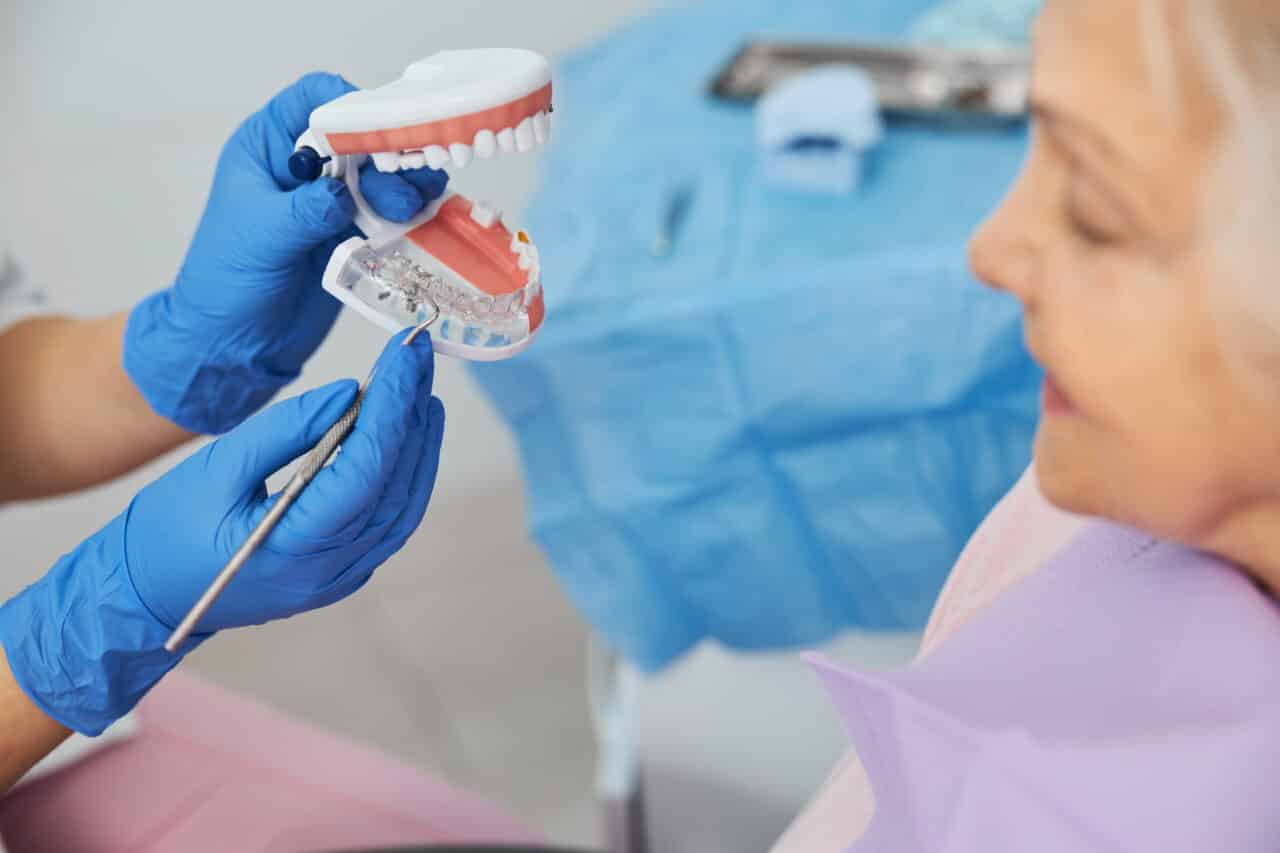
DrAW Dental Clinic
Call us and we will help you to take the best treatment choice
Taking anticoagulants is not a contraindication for implant placement, although each case must be studied individually: the underlying pathology for which the patient is taking the medication, dosage, dosage and type of anticoagulant, etc.
In many cases, it is necessary to consult a hematologist. This is the most appropriate professional to indicate whether the patient can undergo treatment and, if this response is positive, to determine whether it is necessary to modify the pattern of use of anticoagulants.
Dental implants and anticoagulant drugs
First of all, it should be emphasized that allergy to titanium is extremely rare among people allergic to metals.
Since most implants are made of titanium, if you are allergic to this metal, you should inform the implantologist who is going to perform the surgery. In this way, he/she will evaluate the possibility of treating you with implants made of other materials.
Periodontal patients can have dental implants. However, it is important to treat gum disease before undergoing implant placement. Proper treatment and maintenance of periodontal disease is essential to facilitate the implant placement procedure and improve the long-term survival and predictability of implants.
First of all, it should be pointed out that if a person suffers from periodontal disease in his/her natural teeth, it is essential that the problem is controlled before placing the implants. Otherwise, the risk of infection in the implants is increased.
Once the implants are in place, a pathology called peri-implant disease can occur, which is the equivalent of the periodontal diseases that occur in natural teeth.
In a first phase, this disease causes inflammation in the mucosa surrounding the dental implant, which is known as peri-implant mucositis. It is best to start treating the disease at this early stage so that it does not progress. If treatment is not followed, loss of bone surrounding the implant will occur, which is known as peri-implantitis.
Therefore, both periodontal diseases in natural teeth and peri-implant diseases in implants are susceptible to occur and should be treated as soon as possible.
What is peri-implantatis
In general, anyone over 18 years of age is a good candidate for dental implants. There are, however, some diseases that, although not contraindicated, require greater control to achieve a satisfactory result in the intervention.
This is the case of diabetics (who may need more time to achieve a correct osseointegration), people taking bisphosphonates or anticoagulants, or patients with cardiovascular diseases.
In these cases, it is necessary to consult with the implantologist before performing the surgery. In the case of pregnant women, there could be contraindications, not because of the intervention to place the implants, but because of the potential complications that can occur with the intake of antibiotics or anti-inflammatory drugs. That is why it is not recommended to perform oral surgery during pregnancy.
In addition to diseases such as periodontal diseases or diabetes, which can reduce the success rate of dental implants, there are certain systemic conditions that contraindicate the patient to undergo oral surgery:
Blood clotting disorders.
Severe immunosuppression
Having recently suffered a myocardial infarction.
Recent muscular stroke
Use of intravenous bisphosphonates.
Presence of a malignant tumor under treatment.
Bone or gum grafts are not performed in all implant placement surgeries. However, depending on the case of each patient, there are occasions when the treatment requires it.
If we lose a tooth and do not replace it, with the passage of time the bone that supported the tooth will lose height and thickness. For this reason, if we subsequently want to place an implant in the place of the missing tooth, it is necessary to assess whether there is a sufficient amount of bone available.
If the answer is negative, either because there is a total lack of bone or because even if there is, this quantity is not sufficient to support the implant, it will be necessary to perform a bone graft.
In the same way, the loss of a tooth that is not replaced also causes the gum to thin or even disappear with the passage of time.
If at the time of implant placement there is not enough available, it will be necessary to restore the gingival tissue. This will restore the gum’s natural barrier to bacteria and protect the implant.
Bone grafting on dental implants
Gum graft
- Patients who do not have sufficient bone mass for the placement of dental implants have two possibilities to help them rebuild their smile:01.
Bone grafting
The most recommended option is bone grafting. It consists of the placement of artificial bone that serves as an inductor and scaffolding to promote the regeneration of new bone in the area to be treated. After a healing period of about 6 months, it will be possible to place the implants on new bone with total stability.02.
Short implants
There is also the possibility of placing short implants in those cases where regeneration is not possible, achieving the success of the treatment with good esthetic and functional results.
Those people who have little maxillary bone to be able to place dental implants can consider three solutions:
01.
Bone graft
Thanks to an artificial bone graft, and after the time necessary for its integration with the natural bone, the patient will be suitable for dental implant surgery.
02.
Maxillary sinus lift
Following the same line as bone grafting, maxillary sinus lift is an intervention that allows the addition of artificial bone in the posterior area of the upper jaw at the level of molars and premolars. After a period of six months, dental implants can be placed for osseointegration.
03.
Bone grafting or sinus elevation simultaneous to implant placement
Depending on the availability/absence of bone, in some cases both procedures (regeneration and implant placement) can be performed simultaneously, saving treatment time and obtaining the same successful result.

DrAW Clinic
Call us and we will help you to take the best treatment choice
Occasionally bone loss occurs around the implant, especially in patients who previously had periodontal disease and in smokers. However, with regular visits to the implantologist or periodontist, a follow-up can be made to prevent such bone resorption.Infections
Poor oral hygiene can lead to infection of the implants. As a preventive measure, it is advisable to visit a hygienist on a regular basis to maintain good implant hygiene, especially in the case of patients with periodontal problems.Implant loss
Although it is not common, sometimes an implant can be lost due to infection, fracture or a problem in the osseointegration process. However, in general, the lost implant can be replaced by a new one.Fracture of an implant or prosthesis
In patients with bruxism or who have an unstable bite, fracture of both the implant and the prosthesis can occur. However, this is the least common complication.
The osseointegration of the implants in the bone implies their non-mobility. Therefore, if an implant moves, it means its failure, so that it would have to be removed and replaced by a new one. However, a more frequent complication is the loosening of the screw that serves as a union between the crown and the implant. This problem is easily solved by tightening it, giving it the appropriate torque and resealing the implant-crown connection.
In the event that we notice some loosening or mobility in a dental implant, it is advisable to go to a dental clinic as soon as possible to have it checked by an implantologist.
It may simply require the screw to be retightened, or the osseointegration process may be failing, but in either case, it will be a professional who will determine the corresponding treatment for the problem.
Peri-implant diseases -which occur in implants- are infectious processes that are equivalent to periodontal diseases -which occur in natural teeth-. It is an inflammatory and infectious process caused by bacteria and accentuated by environmental agents such as tobacco, inadequate oral hygiene or a systemic pathology. Two phases can be distinguished:
In the initial phase, inflammation occurs in the mucosa surrounding the dental implant. This disease is known as peri-implant mucositis and, with proper treatment, the inflammation is reversible.
However, if the inflammation progresses and is accompanied by bone loss, we are dealing with peri-implantitis. At this stage, the treatment of the disease usually involves surgery to restore the good condition of the tissues surrounding the implants.
Dental implant rejection
When a dental implant is lost, either due to a problem in the osseointegration period, or some time later, due to problems related to tartar, infections or occlusal overloads, the usual procedure is to see a professional as soon as possible.
The implantologist will determine the cause of the implant loss and after an assessment, the affected bone area will be regenerated and a new dental implant will be placed. After the three months required for the healing of the implant in the bone, the crown worn by the patient can be replaced.
In most cases, implant failure occurs in the initial stages of treatment and is caused by infections or poor biological conditions of the patient.
After placing an implant, we distinguish an initial stage that lasts about a week and is the healing phase of the wound caused by the insertion of the implant. It is usually manifested with inflammation, some pain and in some cases with hematoma. After this phase, the sutures are removed and the risk of infection is considerably reduced.
However, during the three months of healing that the implant will need to join the bone, some setbacks may occur. For example, there is a possibility that the bone may not adhere to the titanium surface and soft tissue may form between the titanium and the bone, preventing proper osseointegration of the implant.
This does not mean that the implant has become infected or that the person is allergic to titanium, but that the surgery has healed in a more infrequent way -about 2.5% of the cases-. When this happens, the implant must be removed and the procedure repeated: place an implant and wait another three months of healing for the bone to osseointegrate with the titanium.
Complications in later stages, once osseointegration has occurred, are due to misalignments or fractures of the prosthesis and infections.
Having said this, the most important thing is that any of these alterations are detected in time to solve them and that we can keep the implant, instead of losing it. Prevention is the key to the healthy maintenance of implants in the mouth.
The effects of tobacco, which come from the more than 4,000 toxic and carcinogenic substances contained in cigarettes, enter our blood through the mouth and cause some of the following negative consequences:
Decreases the rate of osseointegration.
The effects of tobacco slow down all the healing processes, so the integration of the implant with the bone will be slower. Thus, the union between both will be more fragile and there will be more chances of failure.
It generates infections
Tobacco weakens the immune system of our body, so its defensive capacity is diminished, exposing it to possible aggressions of infections or bacteria.
It favors the accumulation of bacterial plaque
The development of plaque due to tobacco consumption can generate peri-implant diseases, putting the survival of implants at risk in the long term.
Decreases the capacity to repair lesions
Smoking affects the cells in charge of tissue repair, hindering their normal functioning.
It yellows the teeth
Implants, like natural teeth, are affected by the pigmented particles of tobacco, causing the appearance of stains.
Although the failure rate of implants is only 3% in the hands of a professional, sometimes they can become infected, fracture or present a bone loss. In addition, an implant placed erroneously by someone without sufficient experience can cause it to deviate from the direction of the root, with parts of the metal of the implant appearing through the gum. In these cases, it will be convenient the extraction and repositioning of a new implant.
To remove a dental implant, we will have to remove the thin layer of bone that surrounds it using a drill, and then unscrew and extract it. If the remaining bone allows it, at the same time of the extraction, we will place a new implant which will be of a larger caliber than the previous one.
If it is not possible to place a new implant at the moment, we will close the gum and let the bone regenerate naturally or with the help of a bone graft, if necessary, in order to place a new implant three months after the surgery.

DrAW Dental Clinic
Call us and we will help you to take the best treatment choice
Dental implants are currently immersed in a highly competitive market, where the offers of some dental clinics exceed the ultimate goal, which is to improve the patient’s health, and offer misleading prices with the aim of attracting the maximum number of people.
These dental clinics that offer offers of around 200 dollars try to attract patients by using a partial price that corresponds only to the implant screw. In addition, the latter is usually low-end, which increases the risk of osseointegration failure.
Once the estimate has been made, the patient discovers that the final price increases disproportionately due to the sum of numerous factors that are not included in the price of the offer: prosthetic attachments, revisions, suture removal, surgery…
At the DrAW Dental Clinic the price of a single implant with crown is approximately 1,500 dollars. This price includes the high-end implant, the crown and everything related to the placement: previous study of the case, surgery, revisions, sutures…
Since at DrAW Clinic we offer 100% financing of the treatment in up to 24 months without interest, a top-of-the-range dental implant placed by our specialist implantologist can be paid for only 62.5 dollars per month. However, if you prefer to finance your dental implants over a longer period of time, you can do so in 36 months with shared interest. The only three requirements to be able to finance your treatment are the following:
Last paycheck or pension. If you are self-employed, we will need the last income tax return.
Photocopy of your ID card or residence card.
Account number where you wish to have the treatment paid by direct debit, photocopy of a direct debit bill or bank book.
At DrAW Dental Clinic we are committed to anyone being able to access the treatment they need with the least possible effort. That is why we offer you comfortable and flexible payment conditions:
Interest-free financing
We allow you to finance 100% of the treatment in up to 24 months without interest.
Financing with shared interest
We offer to finance 100% of the treatment in 36 months with shared interest.
Early payment discount
If you make a single payment before starting the treatment, you will get a 5% discount on the total amount.
Payment according to treatment
Each time you come to our office you can pay for the treatment you have undergone.
If you are interested in an implant treatment, the first interdisciplinary consultation with specialists in our clinic will consist of an assessment by our specialists in Implantology – Dr. Alberto Wintergerst and Dra. Ximena Ávila – and Conservative Odontology – Dr. Daniel Hernández and Dra. Andrea Becerril.
This consultation has a cost of 70 euros and lasts approximately one hour and a half. In it, the aforementioned professionals will determine whether the placement of implants is the right treatment for you.
Therefore, the first consultation at our clinic includes:
Panoramic X-ray
Photographic series with intraoral and extraoral images.
Oral examination by specialists in Implantology and Conservative Dentistry.
Joint diagnosis by doctors specialized in Implantology and Conservative Dentistry.
Explanation of the treatment plan recommended by the specialists in Implantology and Conservative Dentistry.
Explanation and delivery of the estimate
Delivery of results: written diagnosis signed by all the doctors, x-rays and photographs.
First implant consultation

DrAW Clinic
Call Us and we will help you to take the best treatment choice
The success rate of dental implants is around 97% for the majority of the population. However, people who are prone to periodontal disease or who suffer from uncontrolled diabetes may see this rate reduced.
Tobacco is one of the main factors that negatively affect implant treatment. Smokers who do not give up (as far as possible) their habit during the period of osseointegration of the implant may also see the chances of success of the intervention diminished.
The guarantee of dental implants basically depends on each dental clinic. At DrAW Dental Clinic we guarantee the proper functioning of the implants for a period of five years. This guarantee covers any unforeseen event or problem that may arise with them at no cost to the patient, provided that two simple conditions are met:
01.
That the patient comes every six months for a check-up.
02.
That the patient undergoes the scheduled dental cleanings.
Guarantee of dental implants
Implants are conceived to be a definitive treatment. That is, they do not have an expiration date or an estimated half-life. In fact, different studies published recently have established that 90% of the implants placed ten years ago maintain their functionality today.
However, the anatomical and physiological characteristics of the person play a fundamental role in the long-term survival of the implants, as well as his or her habits and the origin of the tooth loss.
As regards habits that depend directly on the patient, it is advisable to brush the teeth after every meal -also using dental floss-, not smoking and attending annual check-ups so that the dentist or hygienist can carry out a professional hygiene.
Dental implants are totally safe for our health. The material from which most of them are made – titanium – has been used for decades, is compatible with the human body and has the capacity to osseointegrate.
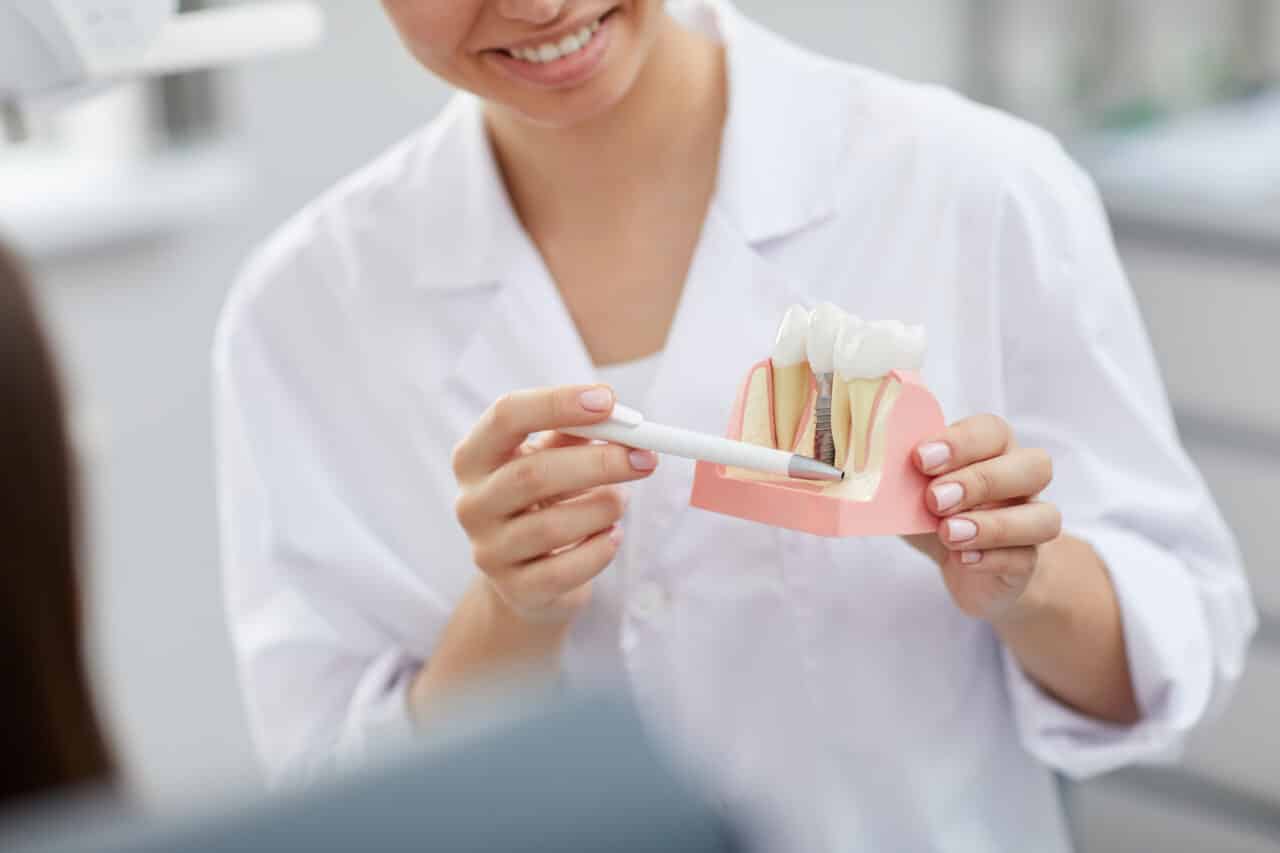
DrAW Dental Clinic
Call Us and we will help you to take the best treatment choice
This is the dominant color of the tooth: yellow, gray, pinkish…The value
Corresponds to the brightness, luminosity and clarity of the light reflected on the tooth.The chroma
Measures the intensity and saturation of the color, from more vivid to duller.Following these guidelines, the implants and their crowns or prostheses will look very natural, so that no one will perceive that you are wearing them.Result after dental implants
Before undergoing the procedure, many people think that they will feel strange once they have the implants. However, it would not be an exaggeration to say that patients do not notice the difference between their own teeth and the implant.
An implant, esthetically, can look as natural as the original tooth, as long as we take into account the color of the enamel at the time of rehabilitation.
When it comes to biting or chewing, the adaptation is fast as the sensations are also similar to those of natural teeth. However, our own teeth are surrounded by a periodontal ligament that allows us to feel pressure when biting or chewing. Implants do not have this ligament, so the pressure sensation may not feel exactly the same.
Dental implants are essentially an effective way to replace missing teeth.
The mission of the implants is to integrate into the jawbone and with the rest of the teeth through the process of osseointegration. Once this has happened, both the functionality and esthetics of a natural tooth are restored. In addition, if properly cared for, implants are a solution that restores health, function and esthetics for life.
The success rate of dental implants is 97%, and this is true for both the first implant and the second. Therefore, even if the first implant were to fail, there would be very little chance that the second implant would also fail. However, it cannot be ruled out.
If a person does not previously suffer from halitosis, dental implants do not produce bad breath by themselves.
However, it is important to emphasize that it is necessary to maintain good daily hygiene that includes brushing after every meal, as well as the use of dental floss, interproximal brushes and mouthwash.
In addition, patients who wear a removable prosthesis should be extremely careful in cleaning it to remove food debris. Failure to do so, in addition to bad breath, can lead to bacterial infections.
Dental implants and good breath
Professor Per-Ingvar Brånemark was a Swedish research physician, known as the inventor of modern implantology. However, his invention was more of a chance discovery that occurred in 1952 when he was investigating the healing process of rabbits. To carry out his research, Professor Brånemark inserted optical chambers made of titanium into the animals’ feet. His surprise was to discover that after a while he was unable to remove the cameras because they had welded themselves into the rabbits’ bone. He called this process osseointegration.
After this experiment, Brånemark wanted to test how his recent discovery worked in the human body, so the members of his team decided to implant titanium pieces in their forearms, thus verifying the solidity of the integration.
Thus it was that in 1965 the first dental implant was performed in a human patient, until finally, in the mid-1980s, its practice was extended to replace missing teeth.
Once the implants have osseointegrated, impressions are taken or the patient’s mouth is scanned with a 3D scanner. The record taken is sent to the laboratory to design a prosthesis tailored to the patient.
The computer design is then sent to the milling center to be reproduced. A CAD-CAM engineering process is then carried out to optimize the result and ensure maximum precision when the high-tech equipment mills the structure.
Once manufactured, the structure will be sent back to the laboratory for the esthetic coating of the prosthesis, which is then sent to the dental clinic, ready to be placed in the patient’s mouth.
How are dental implants manufactured step by step?
The treatment for the placement of dental implants is one of the treatments that requires the fewest visits to the dental clinic, unlike other treatments such as orthodontics or dental esthetics. Thus, in a maximum of 4 sessions in the clinic, the process can be considered completed. The appointments correspond to the following:
To avoid having to come to a first visit where the initial review is performed, we can perform a 3D CT scan on the same day that the implants are placed.
A week later, the patient will be scheduled for a revision of the implants and removal of sutures (this can be done in any dental clinic).
Three months after the implants are placed, a 3D intraoral scan will be performed to request the crown from the laboratory.
A week later, the definitive crown will be placed and the process will be finished.
Implants do not have to be a contraindication to wearing orthodontics. In fact, there are many adult orthodontic patients who have an implant between their teeth. However, it is necessary to take this aspect into account when planning orthodontic treatment. On the one hand, an implant can even be beneficial when it serves as a support point for moving the rest of the teeth.
On the other hand, it should be kept in mind that implants cannot move and that at the time they were placed, they were aligned to an arch that can change with orthodontics. For all these considerations, it is very important to discuss this matter with the orthodontist so that the most appropriate treatment plan can be developed.
Orthodontics and dental implants
Crowns or prostheses placed on dental implants, unlike natural teeth, do not lose their color properties over time. Whether they are made of zirconium or porcelain, they will always remain the color they were created.
If, for reasons such as whitening of natural teeth, the color of the crowns should differ from their adjacent teeth, a new crown would have to be created according to the new color characteristics of the rest of the dentition.
Whitening dental implants

DrAW Clinic
Call Us and we will help you to take the best treatment choice
Initial information about implants can be provided by a general dentist. However, if it is necessary to learn more about the treatment or to start planning the surgery, it is advisable to consult a specialized professional.
In other words, you can consult a dentist specialized in implantology or a maxillofacial surgeon. The important thing is that this professional is the one you trust the most.
No. Dental implants do not set off the alarms of the metal detectors that are located in areas of maximum security such as airports, banks, train stations or different official institutions.
Therefore, whether you have implants or you are thinking of getting them, you do not have to worry about this issue. Also, you do not need to warn the security personnel that you are wearing them.
If you have ever wondered why celebrities have such perfect smiles, it is because not even they are spared from going to the dentist. Whitenings, veneers, orthodontics and even dental implants ensure that their mouths always look perfect in front of the flashes.
This is the case of supermodels like Kathy Ireland who, while playing with her children, fell to the ground head first, breaking her nose and several teeth. Television actress Christie Blinkey also had to resort to dental implants after coming out of a helicopter accident with several broken molars. And actor Ed Helms, from the famous movie “Hangover in Vegas”, was able to perform the scene in which he breaks an incisor in the most realistic way possible, thanks to the fact that he already had a dental implant in place from which he only had to temporarily remove the crown.



